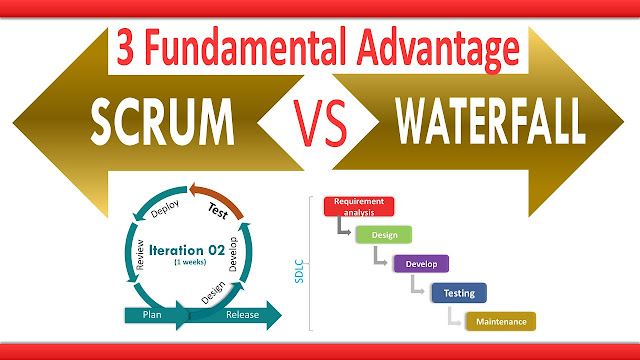When you take any kind of project in hand, the question is
which methodology you will use for your project? Will you opt for Scrum Vs Waterfall Scrum/ Agile or go
for Waterfall? This is decided by the project type itself.
Both Scrum as well as Waterfall has benefits as well as
drawbacks. Hence, both are equally in
demand. Here, in this blog; we will take
a look at the advantages and disadvantages of Scrum Vs Waterfall.
Advantages and Disadvantages of Scrum Vs Waterfall:
Waterfall:
Advantages:
In this project methodology, work is done step by step where
every part of work is done in small steps. Once one phase is finished, the
project then moves to the next phase. Numbers of phases vary according to the
methodology chosen.
Like as, when you choose Waterfall methodology, the project
phases may increase or decrease as compared to Scrum methodology and vice
versa.
Advantages of
Waterfall:
- Easy implementation of forward and backward planning.
- Visible output at every stage – This can lead to better visibility. It includes a baseline to move forward on.
- Choose a target delivery and end date based on the scope of the project.
Disadvantages of
Waterfall:
-
- If the project scope changes, it can impact the quality of the project.
- If the tasks are not done properly and if the mistakes are found at the last stage, complete project can be impacted.
- If the project is dependent on internal or external resources, it can lead to delays as the “plan” is already written.
Well, this was about Waterfall. What is about Agile/ Scrum?
Agile/ Scrum
Methodology
It is a type of process where everything required to
complete a project is done parallel. There are different Agile frame works,
each of them has the similar empirical structure where the tasks are divided
into small subparts.
Requirements and solutions keep on changing based on project
priority.
Agile Advantages:
a)
Change-
Requirements keep on changing. Agile can quickly cater the changes for shorter
planning cycles.
b) Active Involvement: This project methodology always boosts the
active involvement as well as interaction from the stakeholders that is useful
to build product depending upon the accuracy and privacy.
c) Team interaction: In Agile methodology, there’s constant team
involvement and structured communication channels which help in the progress
discovery, their impediments and collaboration.
d) Constant improvement: At one phase, lessons learnt are useful to
improve further steps.
Disadvantages:
- Planning becomes difficult at times because requirements keep on changing. Hence, long term planning never serves the purpose.
- There’s a continuous need for time and efforts. This is important to planning the cycle as well as success.
- Agile has unique and alternative approach. Hence, for projects with a different approach, training is required.
- The teams must be experienced and skilled enough to deal even with the toughest projects.
Based on these advantages and disadvantages of both the
methodologies you can choose the best suitable approach depending on the
delivery type, structure of the organization and resource accessibility.
In a nutshell:
Both the approaches can be blended together, i.e. Agifall
and Wagile. These blended in Scrum Vs Waterfall approaches are becoming popular today and are becoming
much more common in today’s global organizations.

No comments:
Post a Comment